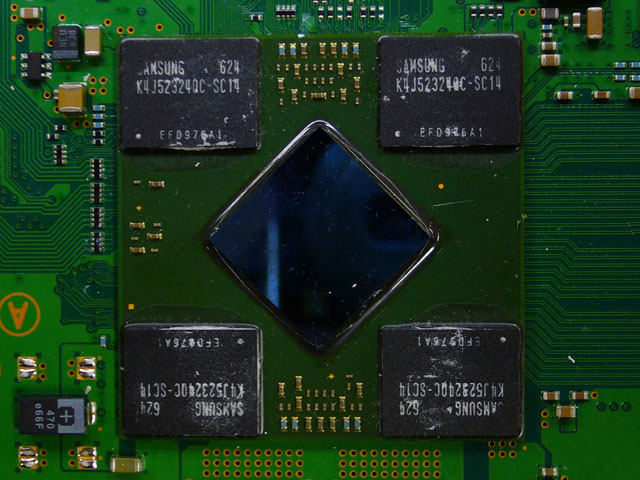So the new 80GB model has been out today in Japan, Pocketnews is running a teardown report.
The Japanese 80GB model weighs 4.05kg (40GB = 4.40kg, 60GB = 5.00kg)
http://pocketnews.cocolog-nifty.com/pkns/2008/10/ps3-80gbcechl-1.html
Its power consumption is a bit lower (1-7W depending use cases) than 40GB when measured with a watt checker.
http://pocketnews.cocolog-nifty.com/pkns/2008/10/ps3-40gb-297b.html
The PSU is
DC INPUT 100-240V 3.3-1.4A 50/60Hz
DC OUTPUT +12V 21A, +5V 0.9A
The interface of the BD drive is now SATA.
http://pocketnews.cocolog-nifty.com/pkns/2008/10/ps3-80gbcechl00.html
WLAN is now a part of the motherboard.
http://pocketnews.cocolog-nifty.com/pkns/2008/10/ps3-80gbcechl-2.html
The HDD is Toshiba MK8052GSX. The heat sink is smaller while the fan is the same as 40GB. The whole cooling unit is 100g lighter.
http://pocketnews.cocolog-nifty.com/pkns/2008/10/ps3-80gbcechl-3.html
The Japanese 80GB model weighs 4.05kg (40GB = 4.40kg, 60GB = 5.00kg)
http://pocketnews.cocolog-nifty.com/pkns/2008/10/ps3-80gbcechl-1.html
Its power consumption is a bit lower (1-7W depending use cases) than 40GB when measured with a watt checker.
http://pocketnews.cocolog-nifty.com/pkns/2008/10/ps3-40gb-297b.html
The PSU is
DC INPUT 100-240V 3.3-1.4A 50/60Hz
DC OUTPUT +12V 21A, +5V 0.9A
The interface of the BD drive is now SATA.
http://pocketnews.cocolog-nifty.com/pkns/2008/10/ps3-80gbcechl00.html
WLAN is now a part of the motherboard.
http://pocketnews.cocolog-nifty.com/pkns/2008/10/ps3-80gbcechl-2.html
The HDD is Toshiba MK8052GSX. The heat sink is smaller while the fan is the same as 40GB. The whole cooling unit is 100g lighter.
http://pocketnews.cocolog-nifty.com/pkns/2008/10/ps3-80gbcechl-3.html


